|
Lezioni di paesaggio è un evento che prevede una serie di incontri, happening, mostre e installazioni temporanee da collocarsi nella Colonia montana di Renesso, edificio del primo razionalismo italiano progettato dall’ingegnere Camillo Nardi Greco nel 1933. La Colonia è situata nel territorio del Comune di Savignone (Ge), nell’entroterra ligure, noto centro di villeggiatura fin dall’inizio del Novecento.
“Landscapes Lessons” is an event that includes a series of meetings, happenings, exhibitions, and temporary installations to be placed in the mountain colony of Renesso, a building of the first Italian rationalism designed by engineer Camillo Nardi Greco in 1933. The colony is located in the territory of the Municipality of Savignone (Ge), in the Ligurian hinterland, a well-known holiday destination since the early twentieth century.
L’obiettivo di Lezioni di paesaggio è diffondere e stimolare una cultura condivisa a partire dalla declinazione e dalla definizione del termine paesaggio nella convinzione che solo conoscendo adeguatamente quest’ultimo è possibile instaurare una nuova e diversa relazione con esso. Le Lezioni mirano dunque al coinvolgimento della cittadinanza attraverso l’invito a discutere apertamente sul tema con architetti, artisti, curatori, direttori di musei, geografi, fotografi e scrittori. panorama nazionale esporranno l’esito delle loro ricerche.
The aim of “Landscapes Lessons” is to disseminate and stimulate a shared culture starting from the declination and definition of the term landscape, believing that only by adequately understanding the latter is it possible to establish a new and different relationship with it. The lessons, therefore, aim to involve the community by inviting open discussions on the topic with architects, artists, curators, museum directors, geographers, photographers, and writers. Experts from across the country will present the results of their research.
Gli incontri di Lezioni di paesaggio si sono tenuti ogni week-end, dal 3 maggio 2008, e suddivisi per sottotemi: Progettare il paesaggio | Definire il paesaggio | La cultura del paesaggio | Il cinema e il paesaggio | La fotografia e il paesaggio | L’arte contemporanea e il paesaggio.
The meetings of “Landscapes Lessons” took place every weekend from May 3, 2008, and were divided into sub-themes: Designing the landscape | Defining the landscape | The culture of the landscape | Cinema and landscape | Photography and landscape | Contemporary art and landscape.
***
installazioni site specific
Fabrizio Basso>Cinque Terre
Due/tre curve, due/tre spari, non sono i G.A.P. di Feltrinelli, è la memoria dei partigiani che attaccano il generale Parodi.
Sulla colonia fascista campeggia lo striscione: “per chi sa andare sul filo all’orizzonte tra e fra il nulla”/On the fascist colony, a banner reads: “For those who can walk on the edge on the horizon between and among nothingness
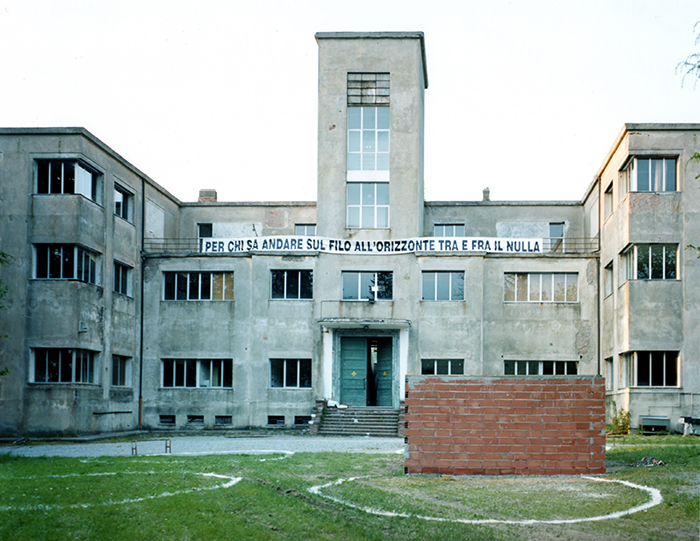
Le parole ascoltate nel dialetto delle “5 Terre”, trascritte su striscioni di PVC e riportati nei sentieri dai quali provengono, come gesti quotidiani: “nonnu nu taggia a ceeza”, le strambuchette sulla piana del Lavaccio, il suono dell’armonica di mio nonno che si perde sul precipizio verso il mare.
The words heard in the dialect of the “5 Terre,” transcribed on PVC banners and placed along the paths from which they originate, become daily gestures: “nonnu nu taggia a ceeza,” the strambuchette on the Lavaccio plain, the sound of my grandfather’s harmonica lost on the precipice toward the sea.
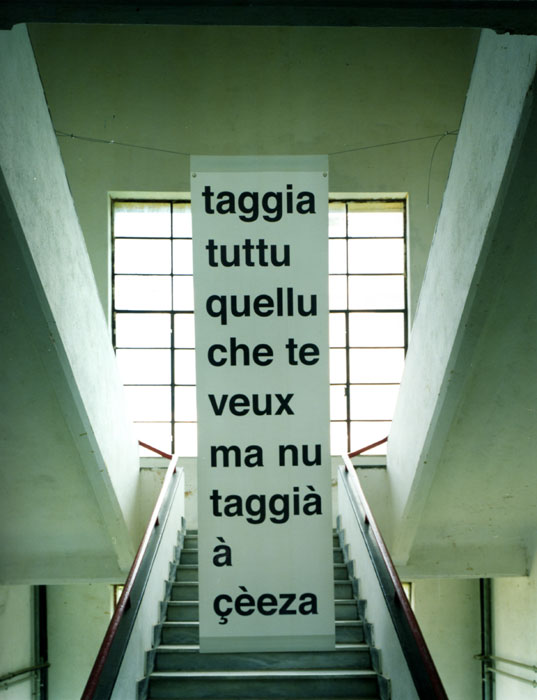
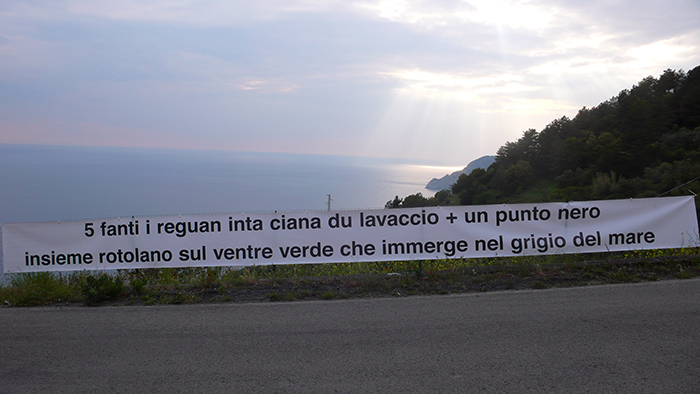
Emilio Fantin>Untitled
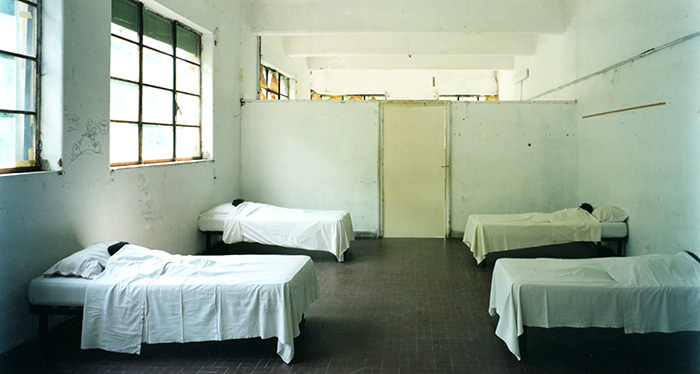
“Nella nostra epoca essere bambini è pericoloso. La vigliaccheria che ha contaminato il mondo impone di accanirsi con i più deboli e indifesi e soprattutto con quelli più puri e bisognosi d’amore. Il bambino è oggetto di quotidiana violenza fisica e psicologica. Astute strategie commerciali provocano danni permanenti, costruendo modelli melliflui e ipocriti, di cui i bambini, affamati, si cibano. Elencare le altre disgrazie che li affliggono è penoso: schiavitù, sfruttamento minorile, scambio d`organi, pedofilia. La parola infanzia riflette, non più una luce chiara e trasparente, ma densa e violetta, inquietante come i cieli di Marghera. Dietro a questa foschia si staglia all’orizzonte, confusa tra vapori cupi, una concezione strumentale dell’infanzia dove un ordine, un fine, s’impongono sopra e al di là dell’esistenza e della dignità dell’età infantile, di un mondo e di una pedagogia consapevole dei diritti e dei bisogni dei bambini. Una strategia studiata apposta per indottrinare piccole teste e pensieri sinceri, che trova nei media il più potente mezzo di persuasione e parallelamente vede la riduzione di un sistema scolastico a un sistema di preparazione di piccoli adulti. E’ la diretta conseguenza di un programma nazional-popolare che fu applicato con assidua e roboante enfasi dal regime fascista che oggi rivive sotto altre spoglie. La farmacologia e la medicina hanno eletto il bambino a formidabile cliente, portatore di patologie del comportamento, con la possibilità di estendere la terapia a un’intera classe, scuola, nazione. Non da meno, con una strategia che agisce a tappeto vengono preparati indiscriminatamente vaccini di ogni tipo che portano alla vendita di milioni di dosi. L’uso di psicofarmaci nei bambini è aumentato in modo impressionante provocando danni nel sistema nervoso, così come l’uso di antibiotici e cortisone in quello immunitario. L’ex colonia fascista di Savignone, con la sua architettura razionalista e l’aria sinistra di cui il tempo e la storia hanno pervaso i muri, mi è sembrato il posto adatto per mettere in scena la crudeltà e l’inquietudine che domina il mondo dell’infanzia. Tre sono le situazioni ambigue e distruttive che ho inteso sottolineare: la scuola, dove alcuni bimbi giacciono nei loro lettini bianchi mentre una voce ossessiva ripete le tabelline all’infinito. La salute: in una cameretta, un bimbo dormiente ha sul comodino una scatola di Prozac. I media: un’ improbabile sala cinematografica dove la proiezione dello Zecchino d’Oro genera un’ atmosfera oscura e inquietante”.
In our era, being a child is dangerous. The cowardice that has contaminated the world dictates relentless cruelty towards the weakest, most defenseless, and, above all, the purest and most in need of love. Children are subjected to daily physical and psychological violence. Cunning commercial strategies inflict permanent damage, constructing honeyed and hypocritical models that hungry children consume. Listing the other misfortunes that afflict them is painful: slavery, child exploitation, organ trafficking, pedophilia. The word ‘childhood’ reflects, no longer a clear and transparent light but a dense and violet one, unsettling like the skies of Marghera. Behind this mist looms on the horizon, blurred among dark vapors, an instrumental conception of childhood where an order, a purpose, impose themselves above and beyond the existence and dignity of childhood, of a world, and of an education aware of the rights and needs of children. It is a strategy deliberately devised to indoctrinate small heads and sincere thoughts, finding in the media the most powerful means of persuasion and simultaneously witnessing the reduction of an educational system to a system of preparing small adults. It is the direct consequence of a national-popular program that was applied with assiduous and resounding emphasis by the fascist regime, which today comes to life in different forms. Pharmacology and medicine have elevated the child to a formidable customer, a carrier of behavior disorders, with the possibility of extending the therapy to an entire class, school, or nation. No less, with a carpet-bombing strategy, indiscriminate vaccines of all kinds are prepared, leading to the sale of millions of doses. The use of psychotropic drugs in children has increased dramatically, causing damage to the nervous system, just as the use of antibiotics and cortisone in the immune system. The former fascist colony of Savignone, with its rationalist architecture and the eerie air that time and history have permeated the walls, seemed to me the right place to stage the cruelty and unease that dominate the world of childhood. There are three ambiguous and destructive situations that I intended to emphasize: school, where some children lie in their white beds while an obsessive voice repeats multiplication tables endlessly. Health: in a little room, a sleeping child has a box of Prozac on the nightstand. Media: an improbable cinema where the screening of the Zecchino d’Oro generates a dark and unsettling atmosphere.
***
Silvia Cini>Gheminga
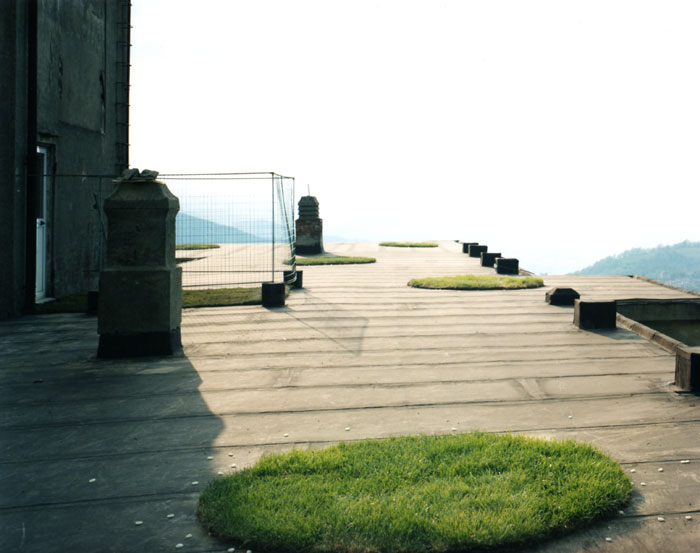
Realizzati, insoddisfatti, ricchi, poveri, analfabeti, acculturati, di qualunque credo e in ogni luogo, comune a tutti è lo stesso cielo; ma sono pochi coloro che hanno ancora occhi per guardarlo. Sedati dallo spirito di sopravvivenza alla quotidianità, non siamo quasi più in grado di fermarci e compiere il gesto attraverso i soli occhi di proiettarci nelle stelle, di guardare oltre ogni contingenza, per scrutarci dentro e vedere milioni di anni luce più in là.
Realized, dissatisfied, rich, poor, illiterate, educated, of any belief and in every place, common to all is the same sky; but few are those who still have eyes to look at it. Sedated by the spirit of survival in everyday life, we are almost no longer able to stop and perform the gesture through our eyes alone to project ourselves into the stars, to look beyond every contingency, to scrutinize ourselves inside and see millions of light-years beyond.
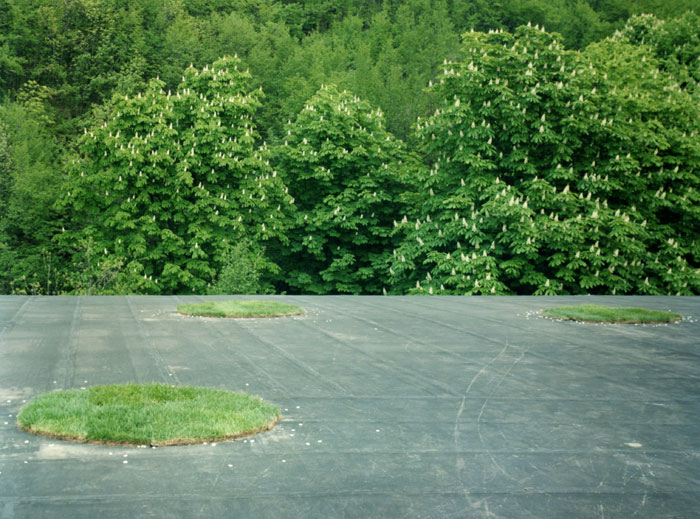
Il paesaggio che ci circonda ha gradualmente offuscato con le sue luci le stelle e con il tempo la trasmissione orale della loro conoscenza si è affievolita tanto quanto la nostra possibilità di stenderci a guardarle.
Il progetto Gheminga è una forma di dono, un angolo rubato al tempo come la colonia che lo ospita: cerchi d’erba staccati da terra e portati al cielo, ognuno dei quali ospita uno “spettatore” disteso, saranno al contempo una variazione minima tra il paesaggio esistente, come una traccia lieve, una nicchia, un passaggio umano nell’incolto, e un disegno rivolto all’infinito.
The landscape that surrounds us has gradually obscured the stars with its lights, and over time, the oral transmission of their knowledge has faded as much as our ability to lie down and look at them.
The Gheminga project is a form of gift, a corner stolen from time like the colony that hosts it: circles of grass detached from the ground and carried to the sky, each of which hosts a ‘spectator’ lying down, will be at the same time a minimal variation between the existing landscape, like a light trace, a niche, a human passage in the wild, and a drawing facing the infinite.
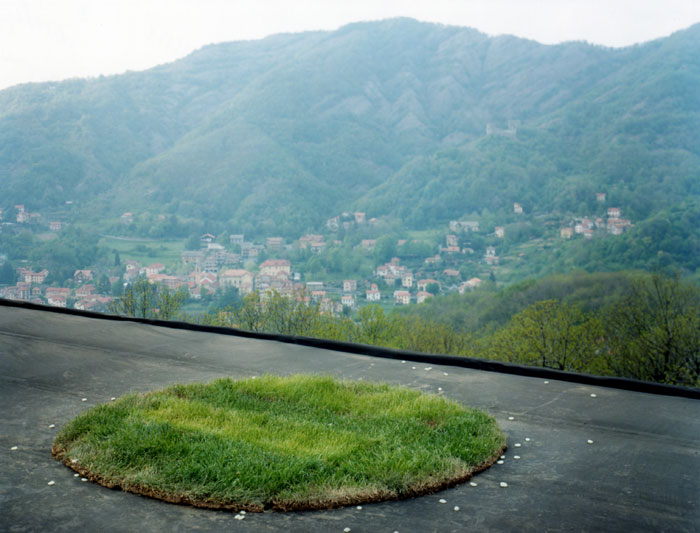
Il titolo del lavoro è un omaggio allo spirito di Gheminga, la ‘Stella che non c’è’; questa, è una stella a neutroni nella costellazione dei gemelli, costellazione sui cui tracciati l’uomo fin dall’antichità ha strutturato architetture e impianti urbanistici.
Geminga fu scoperta nel ’72 dall’astrofisico Giovanni Fabrizio Bignami e rincorsa dagli astronomi per decenni fino al 2003 quando è stata osservata e fotografata dallo stesso gruppo italiano, guidato da Bignami, e dall’astrofisica Patrizia Caraveo.
Il suo nome internazionalmente noto come Gheminga, non incastona nella gloria i suoi scopritori, né eleva alcun che, in realtà non è altro che Gh’è minga, alla milanese, nel senso che proprio non si trovava, che non c’è.
The title of the work is a tribute to the spirit of Gheminga, the ‘Star that is not there’; this is a neutron star in the constellation of Gemini, a constellation on which man since ancient times has structured architectures and urban plans. Geminga was discovered in ’72 by the astrophysicist Giovanni Fabrizio Bignami and pursued by astronomers for decades until 2003 when it was observed and photographed by the same Italian group, led by Bignami, and by astrophysicist Patrizia Caraveo. Its internationally known name as Gheminga does not enshrine its discoverers in glory, nor does it elevate anything, in reality, it is nothing but Gh’è minga, in Milanese dialect, meaning that it simply couldn’t be found, that it’s not there.
***
Guido Affini>Primario ambiente
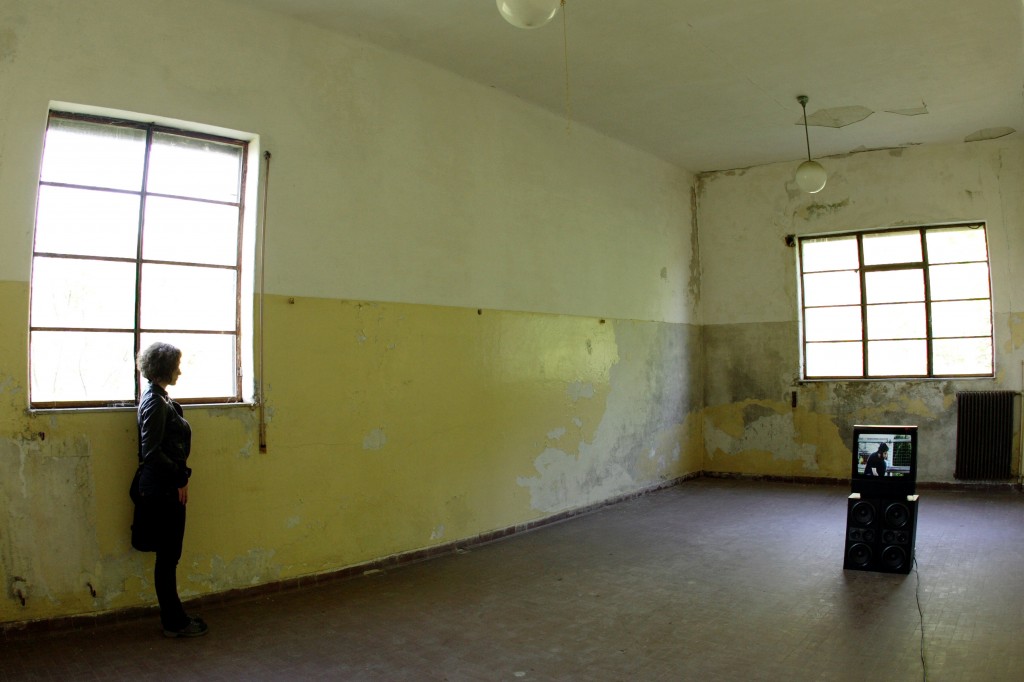
Un’ idrofono immerso in differenti forme di vetro cattura il suono e lo trasmette tramite auricolari al nostro orecchio, l’installazione viene sollecitata da varie condizioni appartenenti ai nostri spazi sonori.
An hydrophone immersed in different forms of glass captures the sound and transmits it through earphones to our ear. The installation is triggered by various conditions belonging to our sonic spaces.
***
altro_studio/Anna Rita Emili>casa pratino
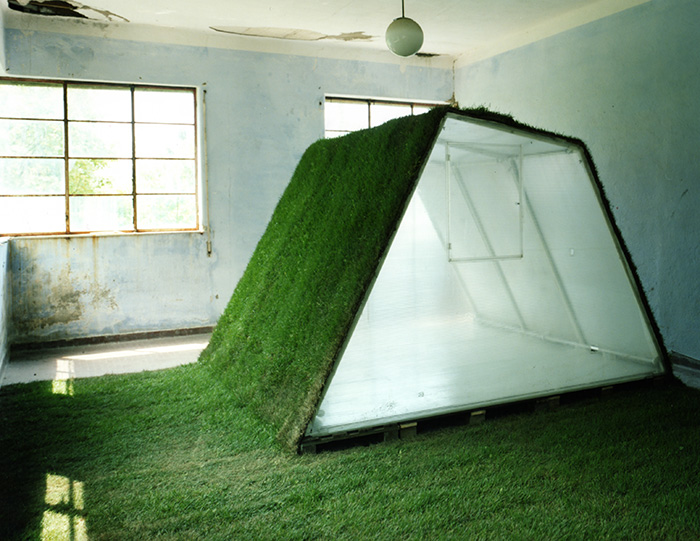
Passeggiando per una via centrale della città, il mio sguardo si posa sui miei passi: mi accorgo di non lasciare impronte. Non c’é più un contatto diretto con la terra, una lastra gigantesca d’asfalto la ricopre.
E’ la stessa separazione che noto tra le persone che passeggiano con me nel centro della città. E’ come se fossimo su una rete infinita le cui maglie ci mettono in comunicazione solo per il tempo di un passaggio. Tutto é ridotto a merce, consumo, occasione d’investimento e di profitto. Mi accorgo che la terra che tanto vorrei calpestare è stata completamente sostituita. La mia ricerca diviene frenetica, come un viandante vado alla ricerca di itinerari non tracciati, cerco ovunque indizi che mi riportino verso un rapporto perduto, quello tra l’uomo e la natura, tra l’uomo e la sua libertà.
Walking along a central street of the city, my gaze falls on my steps: I realize I’m not leaving any footprints. There is no more direct contact with the earth; a giant asphalt slab covers it.
It’s the same separation that I notice among the people walking with me in the city center. It’s as if we are on an infinite network whose meshes connect us only for the time of a passage. Everything is reduced to merchandise, consumption, an opportunity for investment and profit. I realize that the earth I would so much like to tread has been completely replaced. My search becomes frantic, like a traveler, I seek unmarked paths, I search everywhere for clues that lead me back to a lost relationship, that between man and nature, between man and his freedom.
Michel Foucault.
***
]zerozoone[>paesaggi italiani
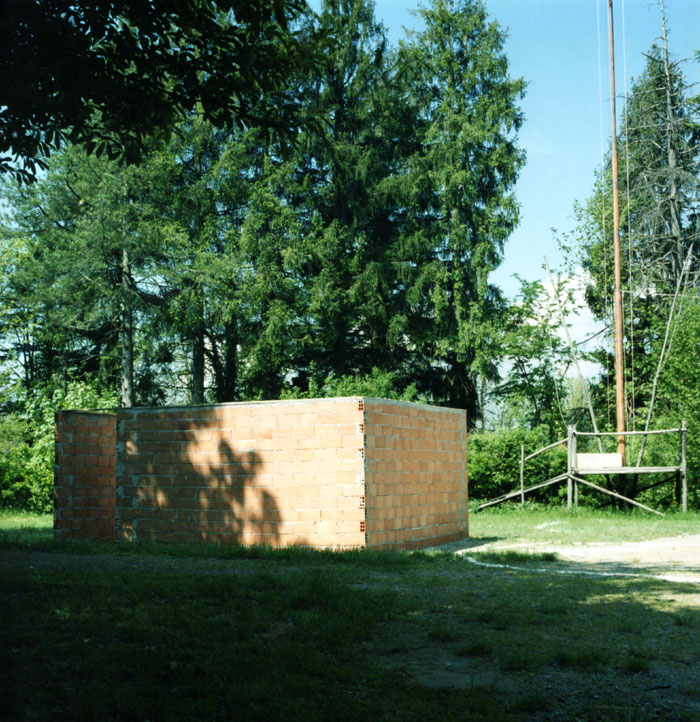
]zerozoone[ non è una parola definibile. E’ un luogo fatto di esseri umani, un contenitore di idee. La composizione della tribù è variabile nel tempo e mutevole nelle forme con cui si esprime: Ci interessa tutto e tutto ci interessa.
zerozoone” is not a definable word. It is a place made up of human beings, a container of ideas. The composition of the tribe is variable over time and mutable in the forms with which it expresses itself: We are interested in everything and everything interests us.
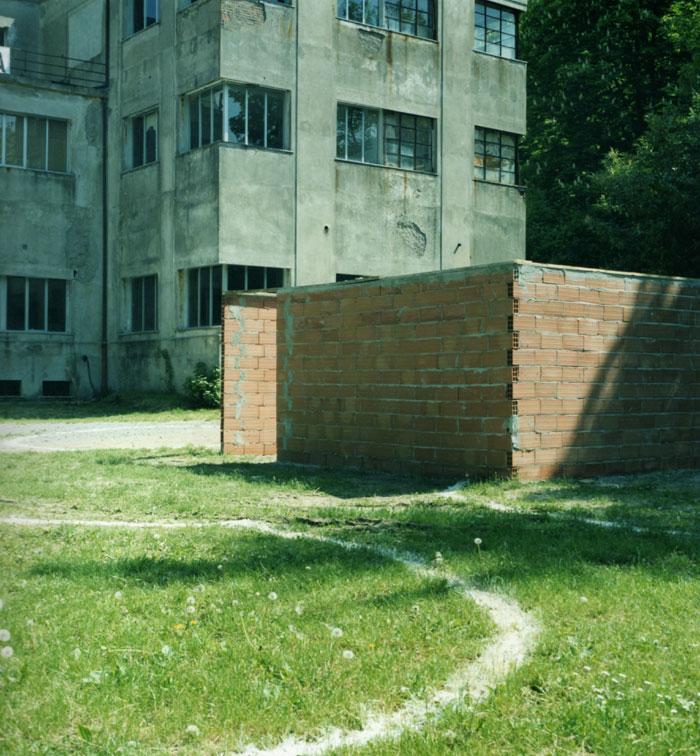
Non definiamo un campo di ricerca e neanche una disciplina nel quale agire, piuttosto possiamo dare una definizione della nostra attività prevalente, possiamo raccontare il nostro gioco più amato: Inventare luoghi. Inventori di luoghi quindi, di mutazioni negli spazi, un po’ come fa Archimede con i suoi oggetti fantastici (Archimede Pitagorico quello di Topolino). Spesso ci troviamo a gestire queste mutazioni, inventando i modi formali con cui queste mutazioni devono e possono avvenire.
E’ l’atteggiamento che è importante, ovvero sentire che il mutamento non è solo formale, ma fisico, con tutti i sensi, e investe il tempo e la mente. Il tutto, l’infinito è una realtà che solo in astratto può possedere delle categorie; inoltre il mutare è inevitabile, è insito nella stessa essenza della materia, è la stessa danza del cosmo che si caratterizza come continuo mutamento.
We do not define a field of research or even a discipline in which to act. Instead, we can give a definition of our predominant activity, we can tell our favorite game: Inventing places. So, we are inventors of places, of mutations in spaces, a bit like Archimedes with his fantastic objects (Archimedes Pythagorean, the one from Mickey Mouse). Often, we find ourselves managing these mutations, inventing the formal ways in which these mutations must and can occur.
The attitude is what matters, feeling that the change is not only formal but physical, involving all the senses, and impacting time and mind. The whole, the infinite, is a reality that can possess categories only in the abstract; moreover, change is inevitable, inherent in the very essence of matter, it is the dance of the cosmos characterized by continuous transformation.
***
Land-I>il paesaggio non è un gioco/the landscape is not a game
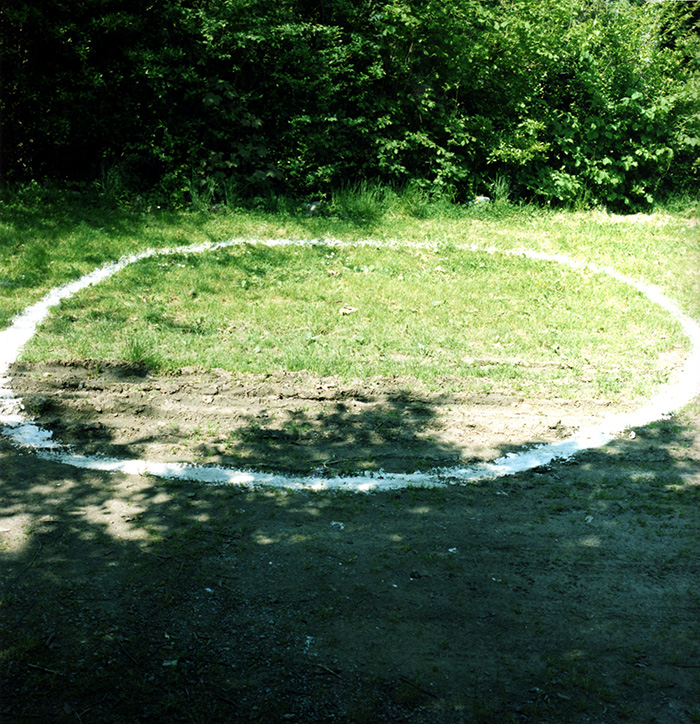
La progettazione per noi si identifica con il processo di appropriazione del luogo. Questo avviene con lo svolgimento a volte contemporaneo dei due momenti del Survey – lettura e Assessment – interpretazione del luogo su cui opereremo, luogo che esploriamo in termini di connessioni e preesistenze.
Design, for us, is synonymous with the process of appropriating the site. This occurs through the sometimes simultaneous execution of the two phases: Survey – reading, and Assessment – interpreting the site on which we will work, exploring it in terms of connections and preexistences.
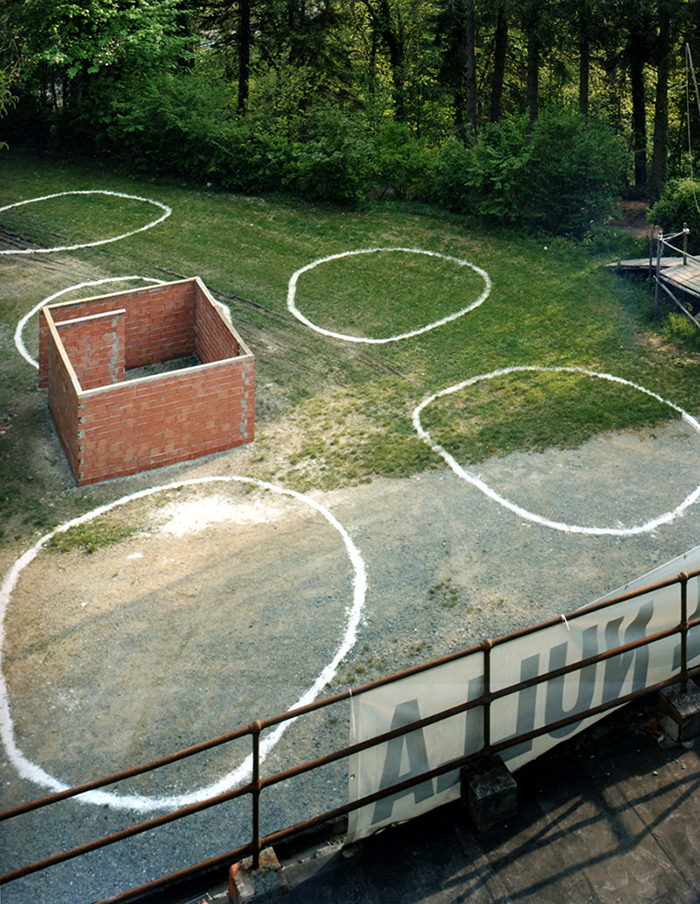
‘Survey’ cioè indagine sul campo, vuol dire fisicamente percorrere lo spazio,scoprire un ambito che va molto oltre al contesto dell’area da progettare, una sorta di indagine ‘territoriale’. Elaboriamo poi queste prime osservazioni con indagini storiche, cartografiche, che ci aiutano a ricostruire il mosaico culturale e naturale che ha portato lo spazio su cui progetteremo ad essere cosi come lo abbiamo visto. Le potenzialità di progettazione di questo spazio sono infinite, tutte riconducibili alla parola ‘connessione’, di luoghi disomogenei, elementi solo apparentemente privi di legami reciproci.
‘Survey,’ which means on-site investigation, involves physically traversing the space, discovering an environment that goes far beyond the context of the area to be designed, a kind of ‘territorial’ investigation. We then elaborate on these initial observations with historical and cartographic research, helping us reconstruct the cultural and natural mosaic that has shaped the space we will design. The design potential of this space is infinite, all tied to the concept of ‘connection’ between seemingly unrelated places and elements.
|